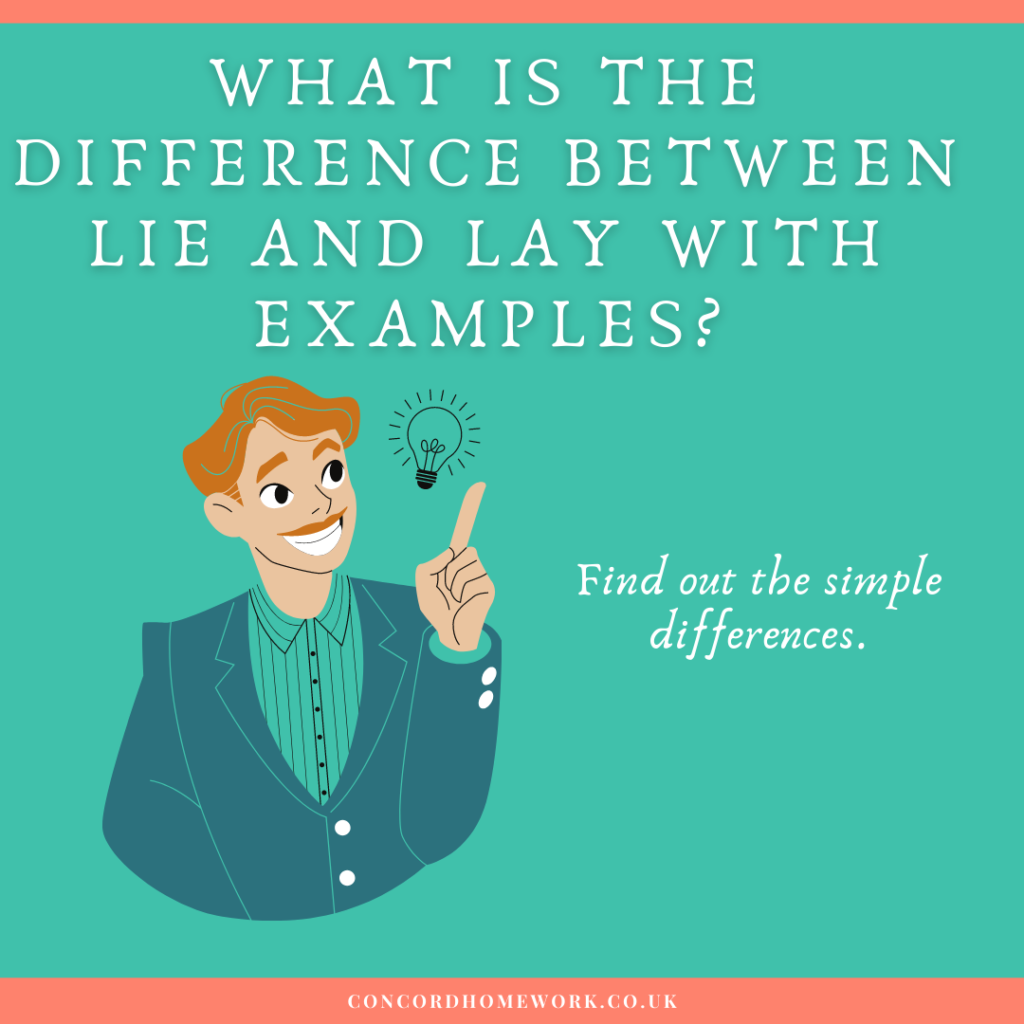Lay/Lie
Even some native speakers have trouble with these two words—learn
them well and you will be a super star!
Lie is an intransitive verb and never has an object. It means to stay at rest in a horizontal position.
Don’t say: I am going to lay down for a nap.
Do say: I am going to lie down for a nap.
Lay is a transitive verb and always requires an object. It means to set or put something down.
Don’t say: Please lie this book on the desk.
Do say: Please lay this book on the desk.
Note: Remember the saying “Let sleeping dogs lie” and note that the sleeping dog is not
moving.
Lay is more active than lie.
More in-depth:
Understanding “Lay” and “Lie”:
Lie is an intransitive verb, which means it does not require a direct object. It describes the action of reclining or resting in a horizontal position. For example:
- Incorrect: I am going to lay down for a nap.
- Correct: I am going to lie down for a nap.
In this case, “lie” is used because the subject (I) is performing the action of reclining without acting upon an object.
Lay, on the other hand, is a transitive verb, meaning it requires a direct object to act upon. It describes the action of setting or putting something down. For example:
- Incorrect: Please lie this book on the desk.
- Correct: Please lay this book on the desk.
Here, “lay” is used because the subject (you) is placing the book (direct object) onto the desk.
Additional Examples:
- Lie:
- She lies on the grass and reads a book.
- The cat lies in the sun to warm itself.
- After a long day of work, I like to lie in bed and relax.
- Lay:
- Can you lay the dishes on the table for dinner?
- The farmer lays fresh eggs in the basket every morning.
- Please lay the baby gently in the crib.
Note on the Saying “Let Sleeping Dogs Lie”:
The phrase “Let sleeping dogs lie” illustrates the importance of leaving things undisturbed, especially when they are peaceful or inactive. In this idiom, “lie” is used because the dogs are not being acted upon but are instead maintaining a state of rest.
Understanding the Active Nature of “Lay”:
It’s essential to recognize that “lay” implies a more active role than “lie” because it involves the action of placing or setting something down. When using “lay,” you are actively doing something to an object, whereas “lie” describes the state of being at rest without necessarily interacting with anything else.
By mastering the distinction between “lay” and “lie,” you can enhance your communication skills and avoid common errors in English grammar. Practice using these verbs correctly in your everyday speech and writing to become a language superstar!
Remember, even native speakers sometimes struggle with these distinctions, so don’t be discouraged if it takes time to grasp them fully. Keep practicing, and you’ll soon be laying and lying like a pro!

